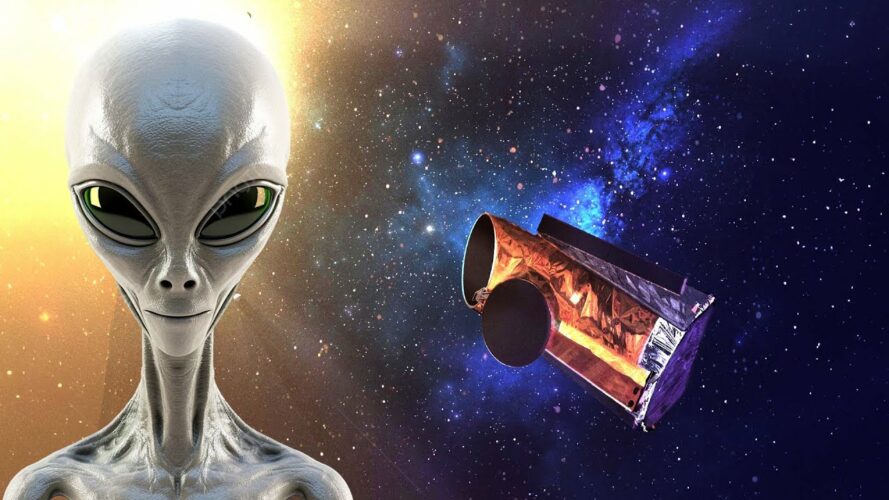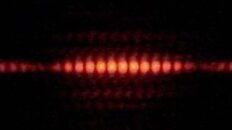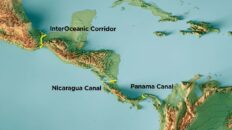The James Webb Space Telescope has had an amazing first year, but there are already telescopes in the works that will make JWST look like child’s play. Today we look the next generation of telescopes that will blow our minds. (For the record, I in no way think that JWST sucks)
TRANSCRIPT:
2023 was the first full year of The James Webb Space Telescope. And in that time it has dazzled scientists with its images and findings, opening up the universe in a way never before possible, and along the way providing answers to long-standing questions, as well as stirring up questions we never thought to ask. Bringing us closer than ever to the Big Bang and the origins of our universe.
But that was last year. It’s 2024, baby, out with the old, and in with the new.
James Webb? More like… Spames Blebb – that makes no sense…
The James Webb Telescope was first conceived in the early 90s. We didn’t even have smart phones back then. The internet barely existed. We still got around on horses, people still had tails – it was a different time.
So surely the telescopes we’ve conceived since then have even more potential to blow our minds and bring even more of the universe into focus for us. Quite literally.
So let’s take a look at the next generation of space telescopes and how they might change our perspective on the universe.
So a lot of what I’m going to talk about in this video is, unfortunately, a long way away.
Like i just said, these things take a long time to develop, and some of these are just in the concept stage right now.
But they’re exciting to think about, when you consider what JWST is doing with 90’s technology.
Yeah, I know, the technology evolved along with it, it’s not running on 90’s tech, but the point is the tech has evolved now to the point that we can now imagine doing things that they couldn’t have conceived when they conceived JWST.
Simply put, the Habitable Worlds Observatory, or HWO, will be the new hotness in space telescopes when it launches in the late 2030s or early 2040s. What will make HWO special is its focus on finding earthlike exoplanets, and imaging them in visible light.
If that sounds familiar, it’s because the same has been said of several other proposed successors to JWST. Friend of the channel Doctor Becky Smethurst talked about one of these, the Carl Sagan Observatory, or CSO, about a year ago. And honestly, the details haven’t changed much.
HWO will take pictures in the visible light spectrum, similar to the Hubble Space Telescope. And it will inherit the concepts pioneered by two other space telescope programs, the Habitable Exoplanets Observatory, or HabEx, and the Large Ultraviolet Optical Infrared Surveyor, or LUVOIR.
The details of what HWO will look like, and exactly what technologies it will use, are still being worked out.
But one thing already looks certain. HWO will be amazing at finding earthlike, habitable worlds.
In 2022, NASA confirmed that more than 5000 exoplanets have been found, but do you know how many of those planets are thought to be habitable? As of January 2023, a total of 63. And only 23 of those are earthlike in size.
The mirror-or-mirrors making up the aperture could be twice the diameter of those on JWST. They’ll give HWO an unprecedented ability to image near-earth objects. If aliens are hanging out on Pluto, we’ll be able to see their mobile homes.
We’ll also be able watch geysers erupt on icy solar system worlds, image objects in the Kuiper belt, and make a dedicated search for Planet X. Exactly how this will be achieved is in development, but the vision is clear. From exo-earths to Pluto RVs, the future looks bright for anyone with an interest in alien life.
But you might be wondering, why are we even talking about a new telescope so soon? The simple answer is because these things take time. Hubble, for instance, was conceived in 1946, and took 44 years to launch.
Granted, 1946 was before any man-manned satellites were in orbit. The guy who wrote a paper that got NASA thinking about telescopes in space, by the way, was Lyman Spitzer, Jr. That’s why one of the follow-ups to Hubble was named Spitzer.
JWST didn’t have quite that long of a run-up to launch, but it came close. A telescope like it was first discussed in 1989, which was a year before the launch of Hubble. And four years after the launch of the syndicated sitcom, Small Wonder.
On December 25, 2021, JWST launched aboard an Ariane 5 rocket. Despite initial reports it had collided with some reindeer, it made the 1.5 million km trip over the next 29 days to its final destination at the L2 Lagrange point. Six months later, it was ready for first light.
Suffice it to say, nobody at NASA wants to delay their next huge project any more than than they have to. In addition to costing a ton of work hours, JWST massively overran its budget, which is something else NASA wants to avoid in the future. They started work on HWO in 2021, and have set a budget of $11 billion, which is about what JWST actually cost.
But wouldn’t not building a new telescope be cheaper? Sure. And this is where we need to talk strengths and weaknesses of JWST.
Compared to what has come before, JWST’s 6.5 meter aperture is huge. But it’s not the limit of what we could take up in a rocket. More on that later.
JWST’s focus on near- and mid-infrared light gives it the ability to see through clouds of dust that have obscured astronomical details in the past. But that’s not to say infrared is the only region of the electromagnetic spectrum worth observing. It’s no good if what you want to see is the dust, for one thing.
For another, there are chemical elements that are easier to detect by breaking down visible light. This is important if you’re looking for earthlike atmospheres, which are rich in these elements. Oh, and there is that whole thing about seeing how astronomical objects would look like to our own eyes.
Don’t get me wrong. I love the images we’re getting from JWST. It doesn’t really make a difference that the images are false-colored.
Even optical images, like the ones from Hubble, are given colors not seen by the telescope. This is done to make up for shifts in wavelengths, or to make the pictures prettier, and that’s all fine. But when you’re talking about imaging Pluto, or a exo-Earth somewhere…yeah, I’d like to get as close as we can to the real colors.
Anyway, if HWO turns out similar to the proposals for CSO or LUVOIR, it will be able to take pictures with staggering detail.
As Dr. Becky explained in her video – go watch it – An orbital telescope with a 12-meter aperture would make images so sharp, it would be able possible to pick out Earth and Mars in a picture taken 27 light years away. Proxima Centauri is much closer than 27 light years. So is Teegarden’s Star b.
And think of the new worlds it could image in its first year. The overall count of exo-earths is expected to grow by a factor of five, remember. There’s no doubt we’ll see amazing things with HWO.
There’s also some new innovations that NASA plans to bring to the HWO that spin directly out of the JWST experience.
Evidently the distance to L2 isn’t why JWST is expected to fall apart on its own. It’s a complicated piece of machinery. NASA is building HWO with serviceability in mind.
And who knows? Maybe by the time NASA sends a bot to do HWO maintenance check, they’ll have figured how to patch JWST as well. And it will need patching.
Remember the micrometeoroids that struck JWST last year? HWO will be designed to survive strikes from micrometeoroids like that with minimal damage. That’s the second innovation.
Another innovation they want to include is something they took from the HabEx concept and that’s a starshade. The one in the illustrations show a flower-petal looking thing that’s designed to block specific wavelengths of light. I’ve talked about that on here before.
The Ariane 5 rocket that carried JWST up had a payload fairing with a useable length of 16.19 meters and a maximum diameter of 4.57 meters. Starship fairings can be up to 22 meters long. Being American, they have a thicker waistline than the European Ariane 5, with a husky diameter of 9 meters.
Taking a look at the competition, Blue Origin’s New Glenn has a 20.9 long, 7 meter wide fairing, so it’s in with a chance. But the contender to beat is NASA’s own Space Launch System. The 27.4 meter long fairing is impressive, and though the diameter is slightly trimmer than Starship’s at 8.4 meters, there are sources that say SLS fairings could grow to 10 meters around.
Of course, size isn’t the whole story, there’s also financial considerations. For example with JWSt, ESA provided the launch vehicle, which saved something like 850 million dollars for NASA.
With that in mind, I’ll mention the Ariane 6. Europe’s upcoming rocket will be a bit skinny, with the fairing 20 meters long, but only 5.4 meters in diameter. Still, it’s a contender.
Mind you, we’re talking about a telescope that may not see light for another twenty years. Who knows what rockets, or rocket technology, will be around by then?
I know twenty years is a long wait. But don’t worry. Space geeks will have plenty to talk about in the meantime.
Just to mention some of what’s coming down pipeline in telescopes:
In 2026, ESA plans to launch its PLATO satellite to Lagrange Point 2. PLATO will focus on finding exoplanets and exomoons. That’s cool, because exomoons don’t get much attention, despite the efforts of the Cool Worlds Lab team here on YouTube, so good for them.
Over on this side of the pond, the Nancy Grace Roman Space Telescope, due to launch in 2027, will be an infrared telescope with a similar design to Hubble, but a 100-times greater field of view. It will “delve into the mystery of dark energy” according to NASA, and is expected to image light from a billion galaxies, and find 2600 exoplanets, during its five-year mission.
On the ground, we have the Giant Magellan Telescope to look forward to. With an aperture of 25.4 meters telescope, it will have four times the resolving power of JWST, though it won’t be able to see the same frequencies that are absorbed by Earth’s atmosphere. Still, the location in the Atacama Desert is about as dry and clear as you can get, so the images from Giant Magellan should be stunning.
Speaking of locations, the Thirty Meter Telescope that was being built in Hawaii has been stalled due to protests. The site on Mauna Kea volcano is sacred to the local people. If an agreement is reached, or another location is chosen, Thirty Meter will offer brilliant views of the universe in ultraviolet, visible, and infrared light.
But it won’t be the largest telescope ever built. That distinction will go to the Extremely Large Telescope. With a 39.3 meter aperture, its record is unlikely to be broken anytime soon. Like Giant Magellan, ELT is in Chile. Like Nancy Grace Roman, it will probe dark energy. It will also look for exoplanets and molecules of water in extrasolar protoplanetary disks.




Add comment